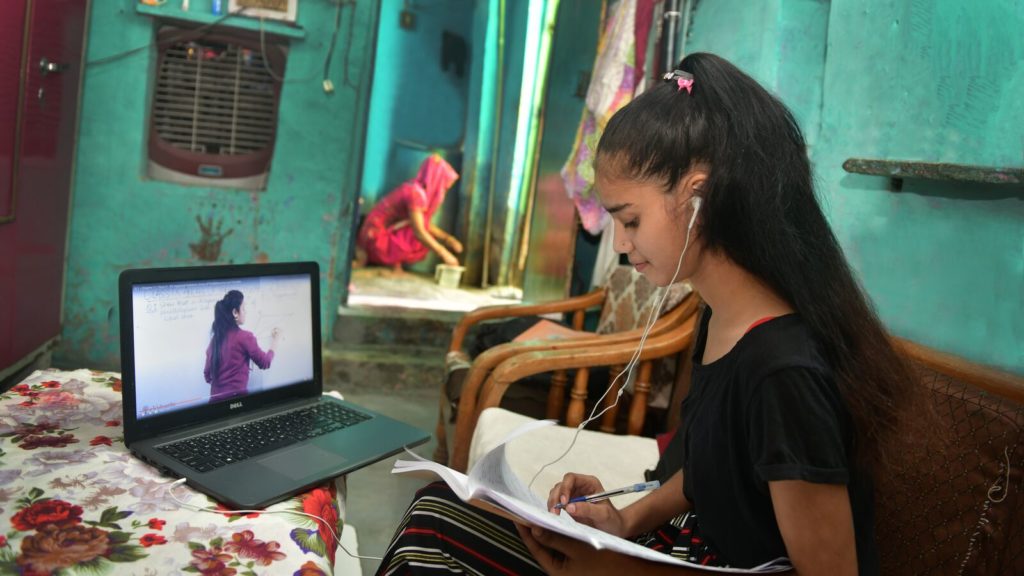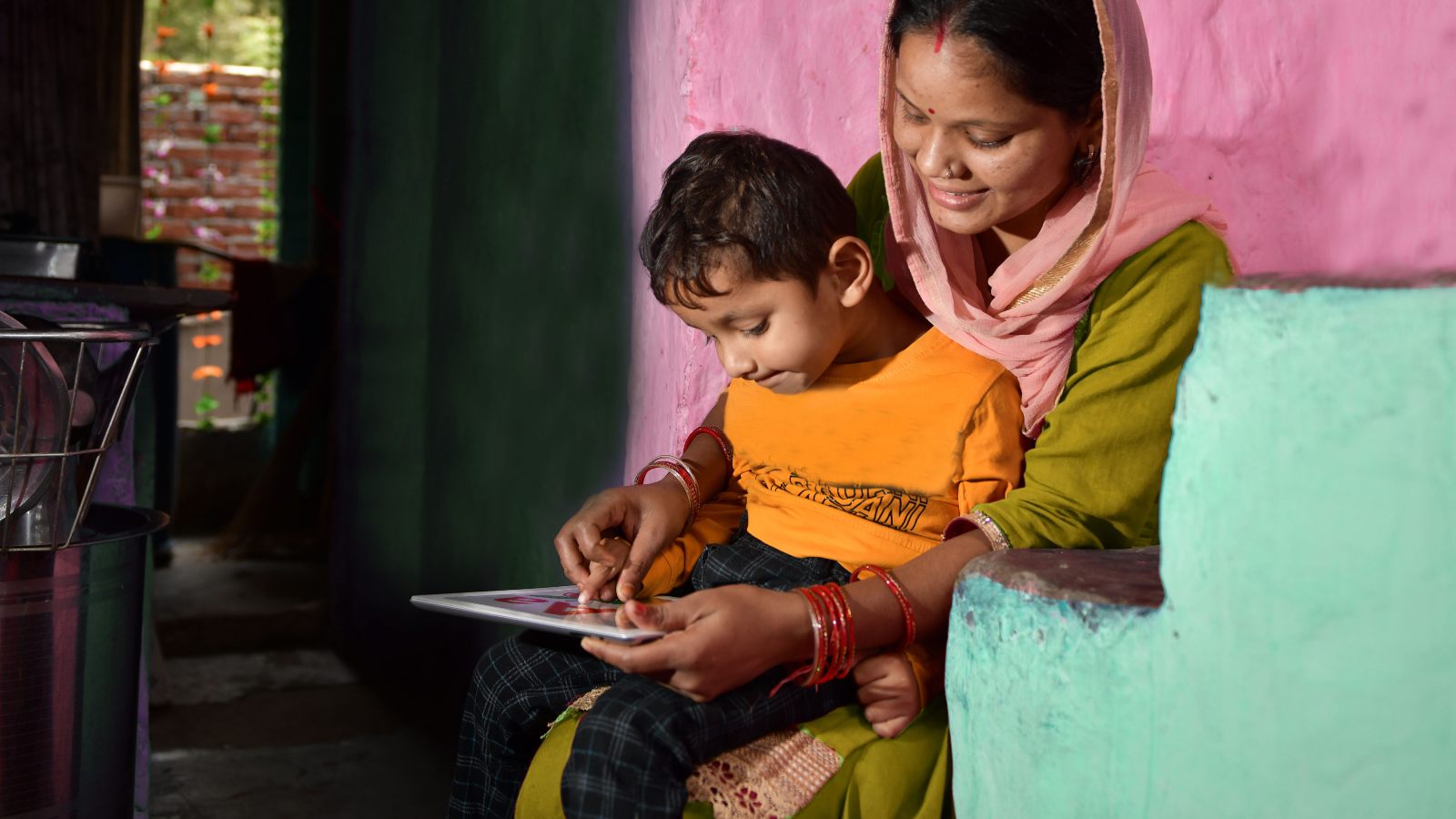COVID-19 Project Overview
The COVID-19 pandemic hit the education sector extremely hard, and many state governments in India have provided students with access to e-learning solutions and support to mitigate learning disruption.
In Himachal Pradesh, Haryana, and Rajasthan, more than five years of systemic transformation in government schools made this type of crisis response possible. By building data-driven education systems and digital communication tools with partners before the pandemic, these states were able to adapt quickly and meet student needs in the wake of school closures.
We were worried for our daughter’s education but with online teaching, she is able to continue her studies. This has also given us an opportunity to be more involved in her education.
Parent of a Government School Student
How it Helps
Government schools in Himachal Pradesh, Haryana, and Rajasthan were poised to innovate and engage stakeholders due to years of tackling education challenges. Some schools already had digital learning tools in place, but many needed to find new ways to reach students at home while supporting teachers and parents. The pandemic catalyzed the move to online learning in India and empowered state governments to quickly adopt technology-driven solutions. Not only did they want to keep students on track, they also needed to provide children with a sense of normalcy to foster well-being during the crisis.
Tech Solutions in Action
In Himachal Pradesh, recent school system transformation led to a WhatsApp-based home study plan called “Har Ghar Pathshala”. More than 70% of students were engaged in the plan before the pandemic. Teachers in Himachal Pradesh leveraged the WhatsApp solution and expanded it to other learning needs. They also connected with parents over WhatsApp, hosting a virtual parent-teacher meeting attended by more than 700,000 parents.
In Rajasthan, school leaders leveraged the government’s DIKSHA platform — an online education portal for teachers. From the start of the pandemic to March 2021, more than 1.2 million teachers have accessed approximately 15 training modules on how to support children remotely, as well as relevant topics. The state’s investment in this platform before the pandemic made it easier to offer teacher support as soon as COVID-19 hit India.
Leveraging Private Sector Partnerships
Edtech applications like Avanti and ConveGenius have been instrumental in enabling remote learning and supporting students.
ConveGenius is reaching students, teachers, and parents using a WhatsApp-based solution with features like weekly quizzes. The platform offers rich data on student and teacher engagement, enabling school systems to create effective content throughout the pandemic. As of March 2021, ConveGenius’ solution has reached more than five million users and facilitated more than two million messages among teachers, students, and parents.
Avanti opened up its libraries of senior-level math and science content for governments to use. In Haryana, a program called Saksham integrated this content in providing asynchronous learning to more than 250,000 children in grades nine through 12. Avanti also made its videos of live lessons free for all government school children, reaching more than two million as of March 2021.

A Lasting Impact on the Education System in India
The pandemic has driven home the importance of building resilient school systems and fostering education innovation. It has also created new problems to solve, like learning loss, mental health repercussions, and economic hardships. The education models of the future need to take these challenges into account and provide flexibility for learning in person, at home, via a hybrid model.
The pandemic also created opportunities for the future:
- Teachers and students have become more comfortable with technology
- Parents are more involved in their children’s education and directly connected with the teachers
- Schools and organizations have built powerful tools and support models for at-home learning
Now more than ever, we have the opportunity to help accelerate change in India’s schools and enable them to reach millions of learners through a mix of classroom and digital learning.


